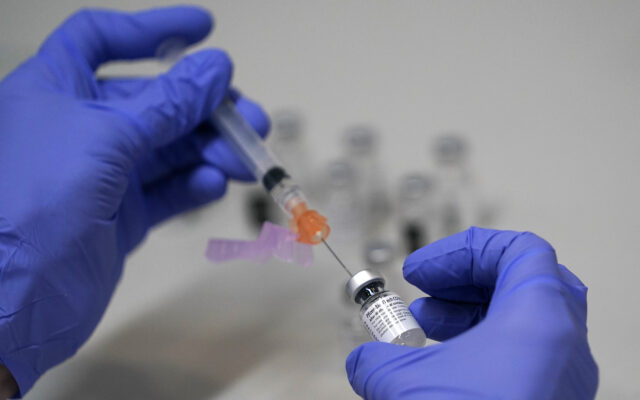
Maine’s least vaccinated areas are seeing an uptick in inoculations
By David Marino Jr., Bangor Daily News Staff
COVID-19 vaccination rates have increased across Maine for those under 50 in the last week, especially in rural parts of the state where residents have been most resistant to the vaccine, according to Maine Center for Disease Control and Prevention Director Nirav Shah.
The counties that have seen the highest per-capita growth in vaccines for those in their teens and 20s have been Piscataquis, Washington, Somerset, Aroostook and Sagadahoc counties, most of which are among the least vaccinated and most rural counties in the state, Shah said Wednesday.
The highest growth for people in their 30s and 40s has also taken place in rural counties — Piscataquis, Penobscot and Washington in particular.
“That’s a good thing for them, as well as for the entire state,” Shah said.
The increase is significant as Maine continues to see vaccination disparities between the state’s rural and more urban areas. Those differences are especially prominent among the state’s young residents, a more relevant factor than ever as the U.S. Food and Drug Administration prepares to approve the Pfizer-BioNTech vaccine for those ages 5 -11.
It is unclear exactly why more young people in rural areas are getting vaccinated. Shah said it might be due to recent vaccine mandates, including one on health care workers that state officials will begin enforcing Friday. The rise in hospitalization and deaths due to the delta variant may also be spurring previously reluctant people to action, he said.
“We’re going to be digging into it more,” Shah said.
Still, it is clear that vaccine mandates have forced some people to get inoculated who wouldn’t have done so otherwise. The vaccination rate for health care workers has risen sharply in the state as the deadline for the vaccine mandate approaches. And more than 10,000 University of Maine System students have shown evidence of vaccination since late July.
While some have done so begrudgingly, they are nonetheless now among the ranks of the vaccinated. Those include Alexis Toth, 27, of Madison, who spoke to the Bangor Daily News earlier this month. She didn’t want to get vaccinated, but did so she could continue working at her job in the medical field.
“If I didn’t get the shot, I was going to lose my job,” Toth said.
Vaccination rates have long lagged in Maine’s most rural counties, reflecting and perhaps perpetuating a divide between coastal Mainers in the south and those in the less densely populated interior.
Shah said the Maine CDC was making sure that shots were highly accessible in rural areas so that everyone who wants to get vaccinated can do so easily and quickly. Such preparations will also ensure a strong infrastructure for those communities when vaccines roll out for 5- to 11-year-olds, Shah said.
About 81 percent of eligible residents in Maine’s eight most densely populated counties (Cumberland, Androscoggin, York, Sagadahoc, Kennebec, Knox, Lincoln, Waldo) have received at least one shot, according to Maine CDC data. That number is 72 percent for those 12-49 and nearly 90 percent for those 50 and over.
But in Maine’s eight least densely populated counties (Piscataquis, Aroostook, Washington, Somerset, Franklin, Oxford, Hancock, Penobscot), about 71 percent of residents have received at least one shot, 10 percentage points lower. That number is 60 percent for those 12-49 and 81 percent for those 50 and over.
Vaccine hesitancy takes many forms, but data have shown that people with college degrees are more likely to get vaccinated. About one-fourth of residents 25 and over in those most rural counties have a bachelor’s degree or higher, while about 37 percent do in the eight most densely populated counties. Median household incomes are lower and poverty rates higher in the more rural counties.
Politics are also a factor, with those who voted for former President Donald Trump far less likely to be vaccinated. All but one of the eight most rural counties in the state voted for Trump, while all but one of the eight most densely populated ones voted for President Joe Biden.
While urban sections of the state saw the worst of the pre-delta variant surges, more rural counties have seen significant rises in cases, hospitalizations, and death since the delta variant hit Maine in the fall.
With few people having contracted the virus pre-delta, the lack of natural immunity in those communities may have made the population sitting ducks for the more transmissible delta variant, Shah said. He said rural parts of New Hampshire and Vermont had seen similar trends.
Fewer residents in those communities also had the immunity provided by the vaccine when the delta variant hit.
“The delta variant, when it arrived here and started moving into rural areas, essentially came upon a population of individuals with no prior exposure, virtually no prior immunity,” Shah said.